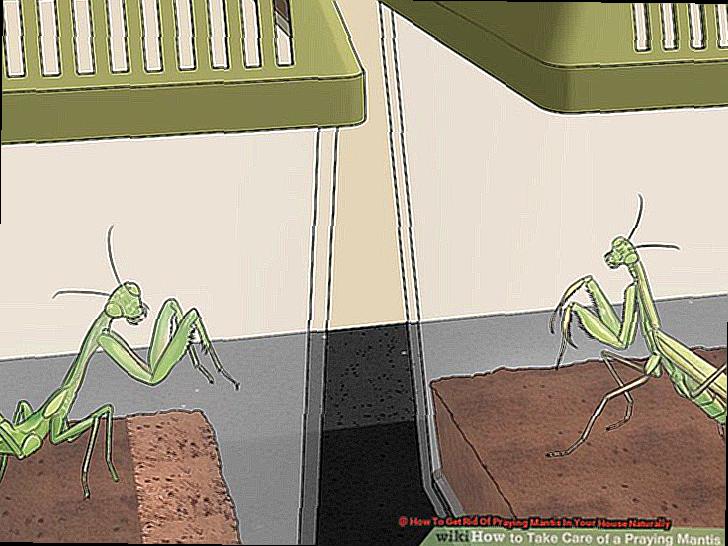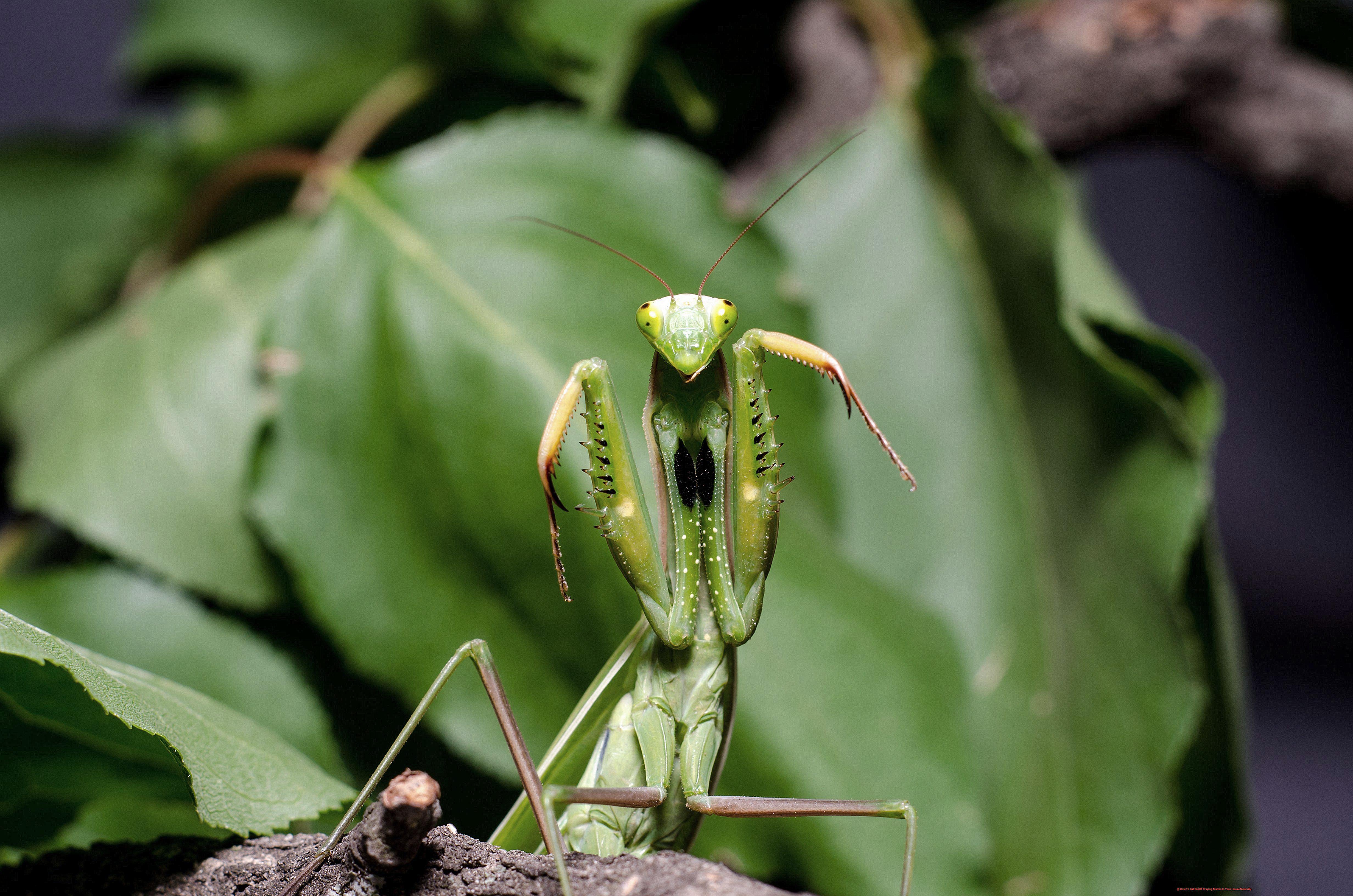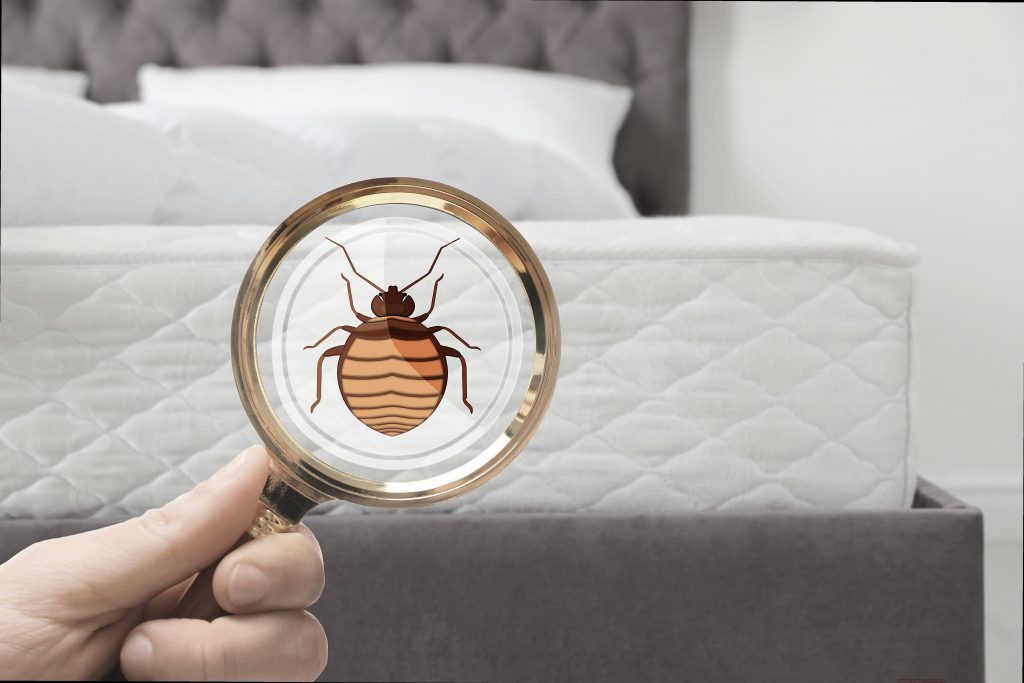Have you ever been surprised by a praying mantis lurking in your home? These intriguing insects may be beneficial for controlling other pests, but their presence indoors can still be unnerving. And with their clever camouflage abilities, it’s easy for them to blend into their surroundings and avoid detection.
There are natural ways to remove praying mantis from your home without using harmful chemicals. In this blog post, we’ll explore effective methods for keeping these creatures out of your living space and maintaining a pest-free environment. Here’s what we’ll cover:
- Understanding the behavior of praying mantis and why they may enter your home
- Simple preventative measures to keep them from sneaking inside
- Natural repellents and deterrents that can discourage praying mantis from staying in your house
- Safe removal techniques for any existing mantises in your home
Bid farewell to unwanted house guests with these all-natural solutions for getting rid of praying mantis. Let’s get started.
Table of Contents
Basic Information about Praying Mantis
Physical Characteristics:
- Body Structure: Praying mantises possess a three-segmented body, consisting of a triangular head, thorax, and abdomen. Additionally, they have two long antennas that aid in sensing prey and their surroundings.
- Color: Mantises exhibit a wide range of colors, including green, brown, and pink. This allows them to blend seamlessly into their environment for both luring prey and defending themselves.
- Eyes: With five eyes in total, mantises have two large compound eyes on the sides of their head and three small eyes between them. Their larger eyes are capable of detecting movement up to 60 feet away, while the smaller ones are used for light detection.
- Wings: Both male and female mantises possess wings, but only males can fly. Female mantises use their wings for short-distance gliding.
- Front Legs: The most unique feature of praying mantises is their raptorial front legs, which are used to firmly grasp onto prey before delivering a paralyzing bite to the back of the neck.

Identification:
- Size: Praying mantises can vary in size from half an inch to six inches in length, depending on the species.
- Appearance: With their triangular-shaped head, elongated body with wings, and long antennas, mantises are easily recognizable.
- Movement: Mantises have a distinct way of moving their head and front legs that sets them apart from other insects.
- Camouflage: Their coloring and ability to blend into their surroundings make it challenging to spot them at first glance.
- Behavior: Mantises exhibit unique behaviors such as standing tall and spreading their forelegs when threatened or making a hissing sound to ward off predators.
- Sightings: Mantises can be found in vegetated areas all over the world, making them easy to spot in gardens, parks, or even inside homes.
In conclusion, praying mantises can be identified by their distinctive physical characteristics, such as their body structure, color, eyes, wings, and front legs.
Praying Mantis: 7 Strange Facts
- Lethal Hunters: Known for their impressive raptorial front legs, praying mantises are skilled predators who use their limbs to grasp and capture their prey. These fierce insects can even take down larger insects like hummingbirds, making them a formidable predator.
- Cannibalistic Mates: During mating, female praying mantises have been observed consuming their male counterparts. This behavior is believed to be due to the male’s smaller size and the female’s need for protein to produce eggs.
- Master of Disguise: Through evolution, praying mantises have developed the ability to blend into their surroundings, making them incredibly difficult to spot. With a variety of colors and patterns, they can effectively hide from both predators and prey.
- Head-Turners: Unlike most insects, praying mantises have the unique ability to rotate their heads a full 180 degrees. This allows them to scan their environment for potential prey without having to move their entire body.
- Winter Survival: In temperate regions, praying mantises survive the winter by overwintering as eggs, which then hatch in the spring when temperatures rise. However, some species have adapted to harsh winter conditions by secreting an antifreeze compound that prevents them from freezing.
- Surprising Relatives: Despite their appearance, praying mantises are closely related to cockroaches and termites as all three belong to the insect order Mantodea.
- Farming for Pest Control: In various parts of the world, individuals have begun farming praying mantises for pest control purposes. These farms raise mantises and release them into fields and gardens to naturally control pest populations without harmful chemicals.
| The largest recorded praying mantis was almost 18 inches long. | Female praying mantises have been known to consume their male partners during mating. | Praying mantises have evolved to blend in with their surroundings, making them incredibly difficult to spot. |
| Praying mantises can rotate their heads a full 180 degrees. | In temperate regions, praying mantises survive the winter as eggs. | Praying mantises are surprisingly related to cockroaches and termites. |
| In some parts of the world, people have started farming praying mantises for pest control purposes. |
Praying Mantis in Different Cultures
The praying mantis, known for its unique appearance and mysterious behavior, inspires a mix of curiosity and trepidation in different cultures. While some societies view the insect as a symbol of good fortune and spiritual guidance, others perceive it as a harbinger of misfortune and fear. These diverse cultural beliefs can significantly impact how individuals choose to handle the presence of praying mantises in their homes.
In many African cultures, the praying mantis symbolizes unity and community. These societies believe that the insect brings balance and harmony to its surroundings and that harming one can bring about bad luck. Similarly, in Chinese culture, the praying mantis is associated with positive outcomes and luck. Consequently, individuals from these cultures may be hesitant to harm or remove praying mantises from their homes.
Conversely, Native American cultures perceive the praying mantis as a messenger from the spiritual realm. In these societies, encountering a praying mantis is often seen as a sign of an important message or event to come. This belief may lead some individuals to leave the insect unbothered or even welcome it into their homes.
In Greek and Roman mythology, the praying mantis is linked to divinity and prophecy. It was believed that the insect could provide answers and insight into the future. Similarly, Islamic beliefs hold spiritual significance for the praying mantis. These cultural associations may make some individuals hesitant to disturb or harm praying mantises in their homes.
In Southeast Asian cultures, the praying mantis represents spiritual growth and self-discovery. As such, encountering one may be seen as a positive omen and may even prompt individuals to seek guidance from it.
Praying Mantis as Pest
The presence of praying mantises in your household can often be seen as a pest due to their predatory tendencies, large size, and indiscriminate choice of prey. These insects are known for their aggressive hunting behavior and can often become a nuisance if they find their way into your home.
While some may view them as beneficial for controlling other pests, such as flies and mosquitoes, praying mantises can also pose a threat to beneficial insects like ladybugs and honeybees. Their large size and sharp mandibles make them formidable predators, capable of taking down prey much larger than themselves.
In addition, praying mantises are not picky eaters and will consume any insect or small animal that they can catch. This lack of selectivity in prey can lead to unintended consequences, such as disrupting the natural balance of an ecosystem.
To prevent praying mantises from becoming a pest in your home, it is important to take preventative measures such as sealing cracks and openings, removing potential food sources, and relocating any mantises that have made their way indoors.
How to Get Rid of them in the House?
Praying mantises are a unique and fascinating addition to your backyard, but when they start invading your house, it can become quite a nuisance. Luckily, there are many natural and effective ways to remove these insects from your home.
Physically Removing Them:
The first step in getting rid of praying mantises from your house is to physically remove them. You can use a broom or vacuum to gently sweep up or suck up the mantis and release it outside. However, be careful not to use your hands as they have sharp spines on their legs that can cause irritation or minor injuries.
Creating a Barrier:
Preventing mantises from entering your house is key to getting rid of them. Start by trimming back vegetation around your house, sealing any cracks or crevices, and fixing any holes in screens or windows. This will create a barrier and make it harder for the insects to enter your home.
Natural Repellents:
Using natural repellents is another effective way to deter praying mantises from entering your house. Essential oils like peppermint, lavender, and citronella can be sprayed around entry points or potential infestation areas. Diatomaceous earth is also a great repellent that can be sprinkled around the perimeter of your house.
Beneficial Insects:
Consider introducing beneficial insects like ladybugs or lacewings into your garden to naturally control pest populations. These insects are natural predators of mantises and can significantly reduce their numbers.
Releasing Them Elsewhere:
For those who do not want to harm the praying mantises, you can always catch them and release them elsewhere. Make sure to release them in an area far away from your house, preferably in a natural setting where they can thrive without causing harm.
In conclusion, there are several natural and effective methods for removing praying mantises from your home. By being proactive and utilizing these methods, you can effectively get rid of these insects and maintain a pest-free home.
Praying Mantises Eggs and their Use
There are multiple natural approaches to effectively and humanely remove praying mantis eggs from your home. These methods include removing the egg cases from the praying mantis cage, carefully peeling them off from containers, transferring the female to a new cage, introducing objects in the cage to encourage laying on them, and modifying plastic containers to serve as homes for adult mantises. Each technique has its own advantages and disadvantages, so it is crucial to select the one that is most suitable for your specific situation.
| Method | Pros | Cons |
| Removing egg cases from cage | – Allows for precise incubation and care of eggs – Prevents overcrowding in cage |
– Can be time-consuming – Risk of damaging eggs during removal |
| Carefully peeling off from containers | – Quick and effortless method – Can be performed without disturbing the female mantis |
– Risk of damaging eggs during removal – May not be suitable for all types of containers |
| Moving female to new cage | – Separates egg cases for individual care – Avoids overcrowding in original cage |
– Requires multiple cages – Female may not always cooperate with being moved |
| Introducing objects in cage | – Encourages female to lay eggs on objects that are easier to remove and incubate – Provides natural habitat for female mantis |
– May not be successful in all cases – Objects may need to be replaced regularly |
| Modifying plastic containers | – Enables easy removal of egg cases attached to walls – Can be used as a permanent home for adult mantises |
– Requires time and effort to modify containers – May not be suitable for all types of containers |
Ultimately, the most effective method for removing praying mantis eggs from your house will depend on your personal preferences and the specific circumstances. It is crucial to handle the eggs with care, as they are delicate and can easily be damaged.
Conclusion
In conclusion, while praying mantises may have their benefits in controlling other pests, having them inside your home can be unsettling.
Fortunately, there are natural and effective ways to remove them without resorting to harmful chemicals. By understanding their behavior and taking preventative measures such as creating barriers and using natural repellents, you can keep these insects out of your living space.
And if they do manage to sneak in, there are safe removal techniques that can be used. It’s also worth noting the cultural significance of praying mantises and how it may influence individuals’ approach towards handling them in their homes.
With these all-natural solutions at hand, you can bid farewell to unwanted house guests and maintain a pest-free environment.






